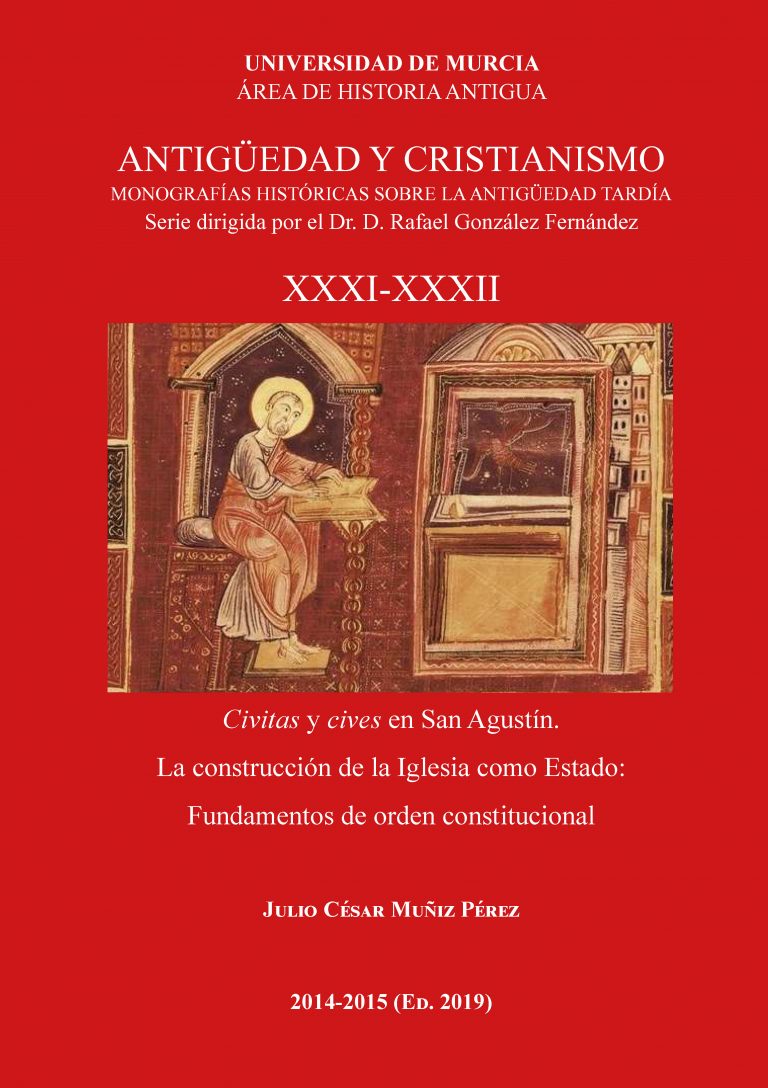The pool at Bethesda in Jerusalem, a place of healing
Abstract
The archaeological site of Bethesda (Jerusalem) is nowadays included in St. Anne’s religious complex (XIIIth century). In Antiquity it was a notorious area related with healing waters. In New Testament Times it already existed a thermal religious complex with healing functions, comprising some underground baths. When Hadrian rebuilt Jerusalem as Aelia Capitolina, those constructions were reused as a sanctuary sacred to Asclepius and Serapis. In IV- Vth century a new Byzantine church of St. Mary of the Probatic is built over these constructions to commemorate the Jesus miraculous healing of a paralytic man (Jn V, 1-9). In XIth century a little monastery was erected. The archaeological excavations brought to light fi ve levels of occupation presenting ponds, tanks and pools, with presence of numerous votive off erings. All those elements reveal the sacred use of this place between IInd century BC to IVth century AD.Downloads
-
Abstract733
-
PDF (Español (España))234
References
ALLEGRO, J.M., The Treasure of the Copper Scroll, London 1960.
ALLIATA, E., “La piscine Probatique à Jérusalem”, Le monde de la Bible 76, 1992, 25-40.
AUPERT, P., “Les thermes comme lieux de culte”, Les thermes romains, Actes de la table ronde organisé par l’Ecole française de Rome, Roma 1991, 185-192.
AUPERT, P., “L’eau curative à Argos”, BCH suppl. XXVIII, Paris 1994, 193-200.
AVI-YONAH, M., Encyclopedia of Archaeological Excavations in the Holy Land, II, Jerusalem 1976, 579-628.
BALMELLE, C. et al, Le décor géométrique de la mosaïque romaine, Paris 1985.
BARTINA, S., “Papyros y hermenéutica para el pasaje evangélico de la piscina probática, Jn V, 1-4”, Atti dell’XI Congresso Internazionale di Papirologia, Milano 1966, 499-507.
BOUDON, V., “Le rôle de l’eau dans les prescriptions médicales d’Asclépios chez Galien et Aelius Aristide”, BCH suppl. XXVIII, Paris 1994, 157-168.
DJA’FAR AL HASSANI, M., STARCKY, J., “Autels palmyréniens découverts près de la source d’Efca”, Annales Archéologiques de Syrie III, 1953, 145-165.
DUNAND, M., “Le temple d’Eschmoun à Sidon. Essai de chronologie”, BullMusBeyrouth 26, 1973, 7-23
DUPREZ, A., Jésus et les dieux guérisseurs, Paris 1970.
LÓPEZ MONTEAGUDO, G., “Las ciudades representadas en el mosaico bizantino de “La Carta” de Madaba. Origen y paralelos”, Espacio, Tiempo y Forma, Serie II/10, 1997, 177-217.
LÓPEZ MONTEAGUDO, G., “The Architectonic Models on the Madaba Mosaic Map”, Piccirillo, M., Alliata, E. (eds.) The Madaba Map Centenary 1897-1997. Travelling through the Byzantine Umayyad Period. Proceedings of the International Conference held in Amman, 7-9 April 1997, Jerusalem 1999, 256-258.
MAZOR, G., BAR-NATHAN, R., “The Bet She’an Excavation Project - 1992-1994”, Excavations and Surveys in Israel 17, 1998, 7-39.
MORRICONE, M.L., “Scavi e ricerche a Coo (1935-1943). Relazione preliminare”,
BollArte 35, 1950, 219-246.
OVADIAH, A., “The Churches of Jerusalem on the Madaba Mosaic Map”, Piccirillo, M., Alliata, E. (eds.) The Madaba Map Centenary 1897-1997. Travelling through the Byzantine Umayyad Period., Proceeding of the International Conference held in Amman (7-9 April 1997), Jerusalem 1999, 252-254.
PANDERMALIS, D., Dion. Site archéologique et Musée, Athènes 1997.
SAN NICOLAS PEDRAZ, M.P., “Mosaicos romanos con representaciones de la divinidad salutífera Asclepio/Esculapio”, Hom. Urbano Espinosa, en prensa.
STAMBAUGH, J.E., Sarapis under the early Ptolemies, Leiden 1972.
TSAFRIR, Y., “The Holy City of Jerusalem in the Madaba Map”, Piccirillo, M., Alliata, E. (eds.) The Madaba Map Centenary 1897-1997. Travelling through the Byzantine Umayyad Period, Proceeding of the International Conference held in Amman (7-9 April 1997)
, Jerusalem 1999, 155-163.
TZAFERIS, V., ISRAELI, S., Banias - 1994, Excavations and Surveys in Israel 16, 1997, 1-3.
TZAFERIS, V., ISRAELI, S., Banias - 1995, Excavations and Surveys in Israel 18, 1998, 1-2.
VINCENT, L.-H., ABEL, F.-M., “Le Sanctuaire de Sainte-Anne et la Piscine Probatique à Jérusalem”, Jerusalem Nouvelle , Paris 1926.
YADIN, Y., Jerusalem revealed, Jerusalem 1975.
1. The authors non-exclusively assign the exploitation rights (reproduction, distribution, communication and transformation) to the magazine.
2. The works published in this magazine are subject to the Attribution-ShareAlike 4.0 International license (CC By SA 4.0). Therefore, they can be copied, used, disseminated, transmitted and publicly displayed, provided that:
i) the authorship and the original source of its publication (journal, editorial and URL of the work) are cited, thus allowing its recognition.
ii) it is allowed to remix, transform or create from the material while maintaining the same license as the original.
Note: Articles prior to 2022 incorrectly display the CC by SA license in the abstract page. They are under a CC by NC ND license as embedded in the article pdfs. Articles published in 2022 and after are under the CC by SA license.

3. Self-archiving conditions. Authors are allowed and encouraged to electronically disseminate the pre-print (version before being evaluated) and/or post-print (version evaluated and accepted for publication) versions of their works before publication, as it favors their publication. Earlier circulation and diffusion and with it a possible increase in its citation and reach among the academic community. Color RoMEO: verde.
























